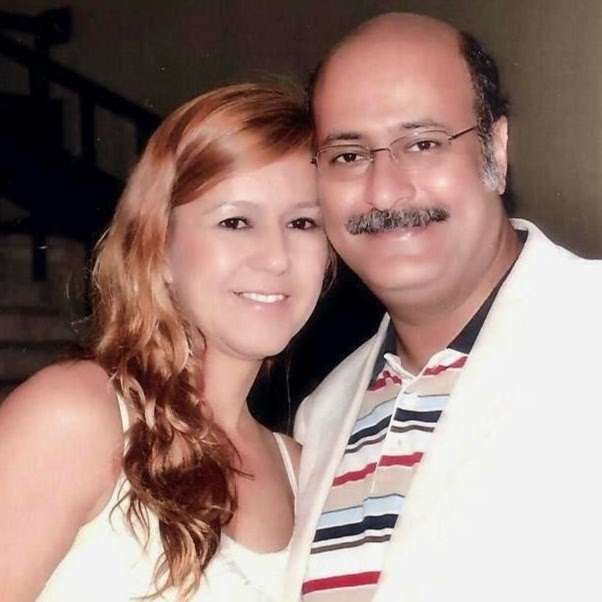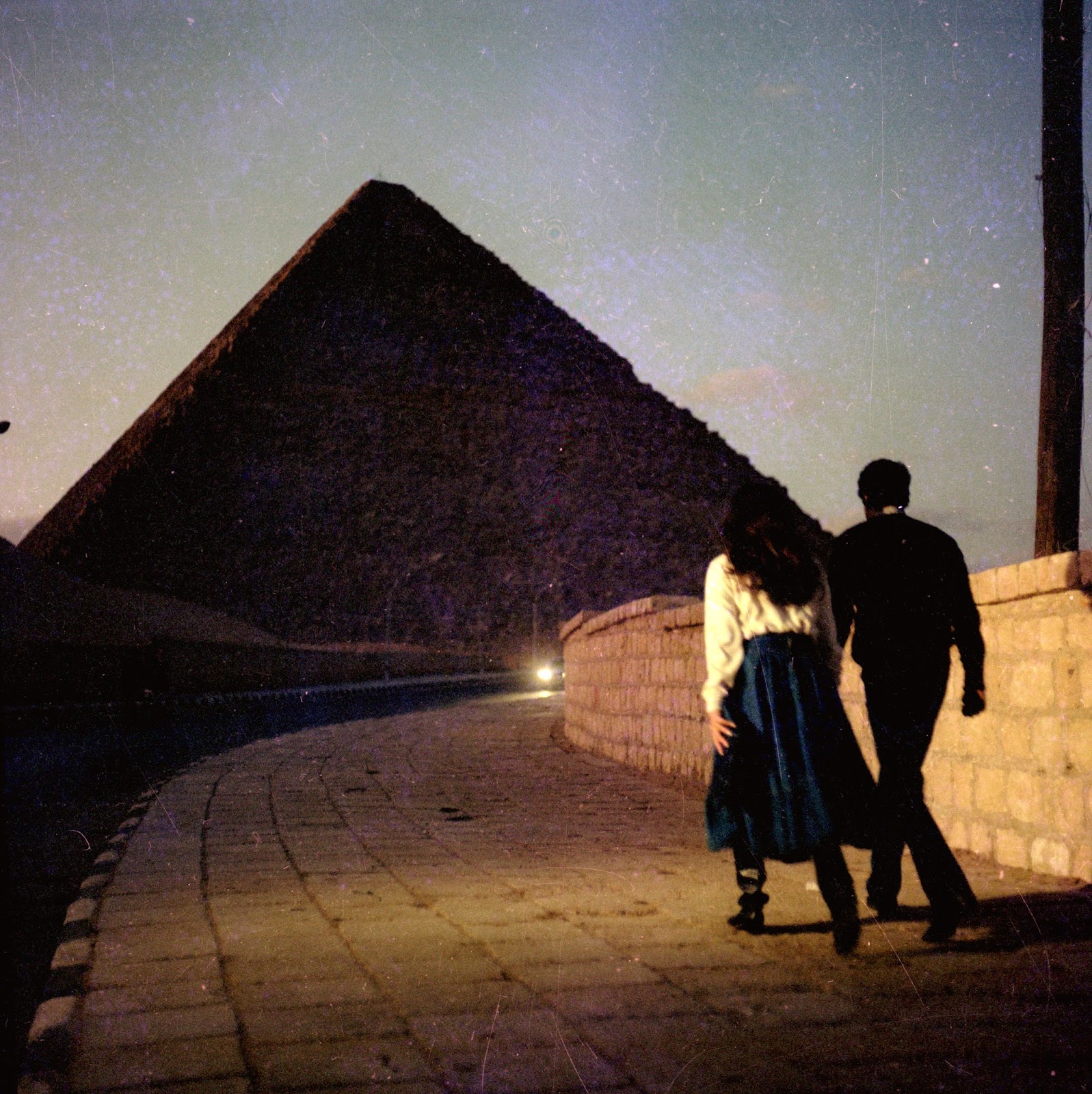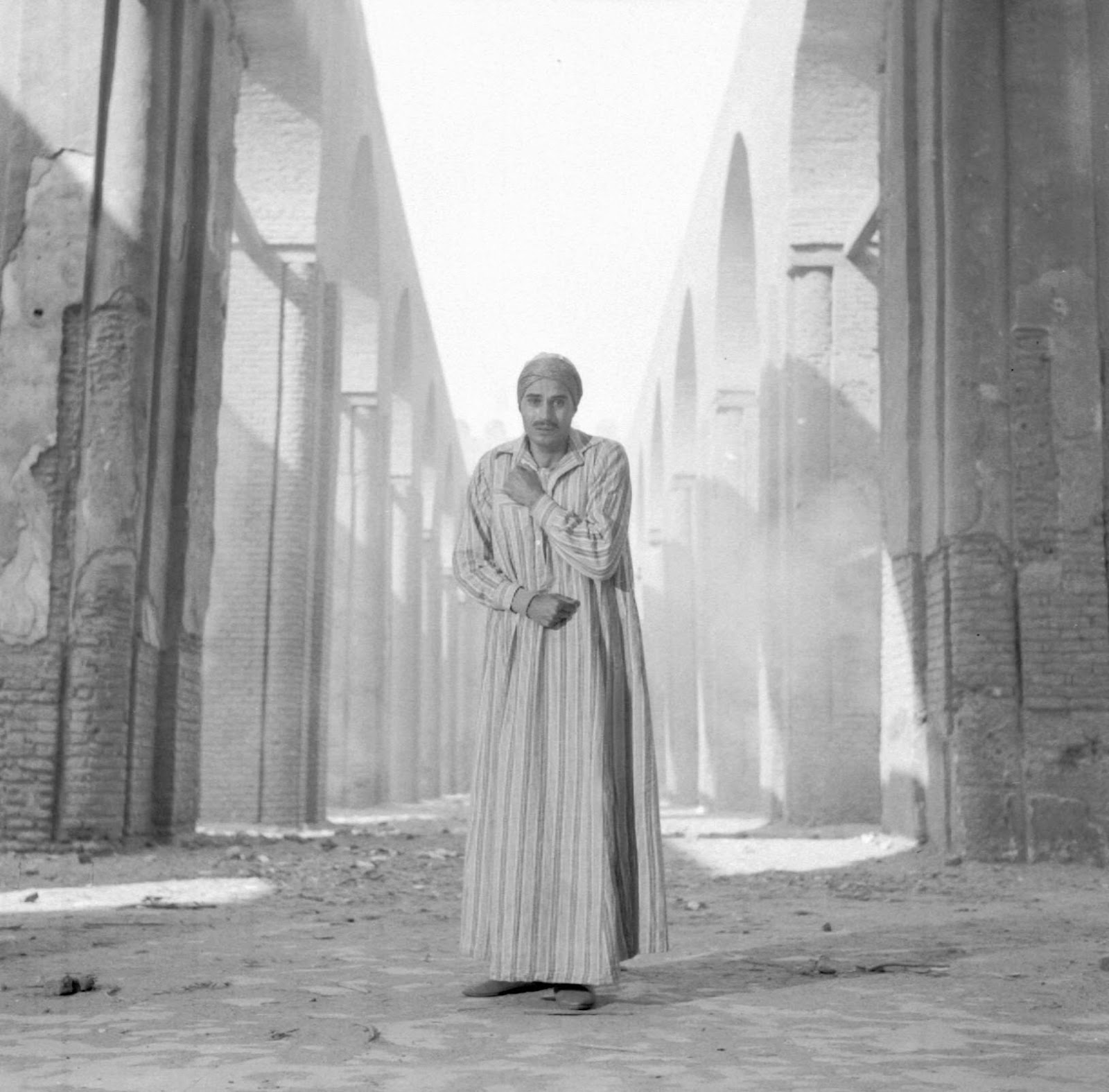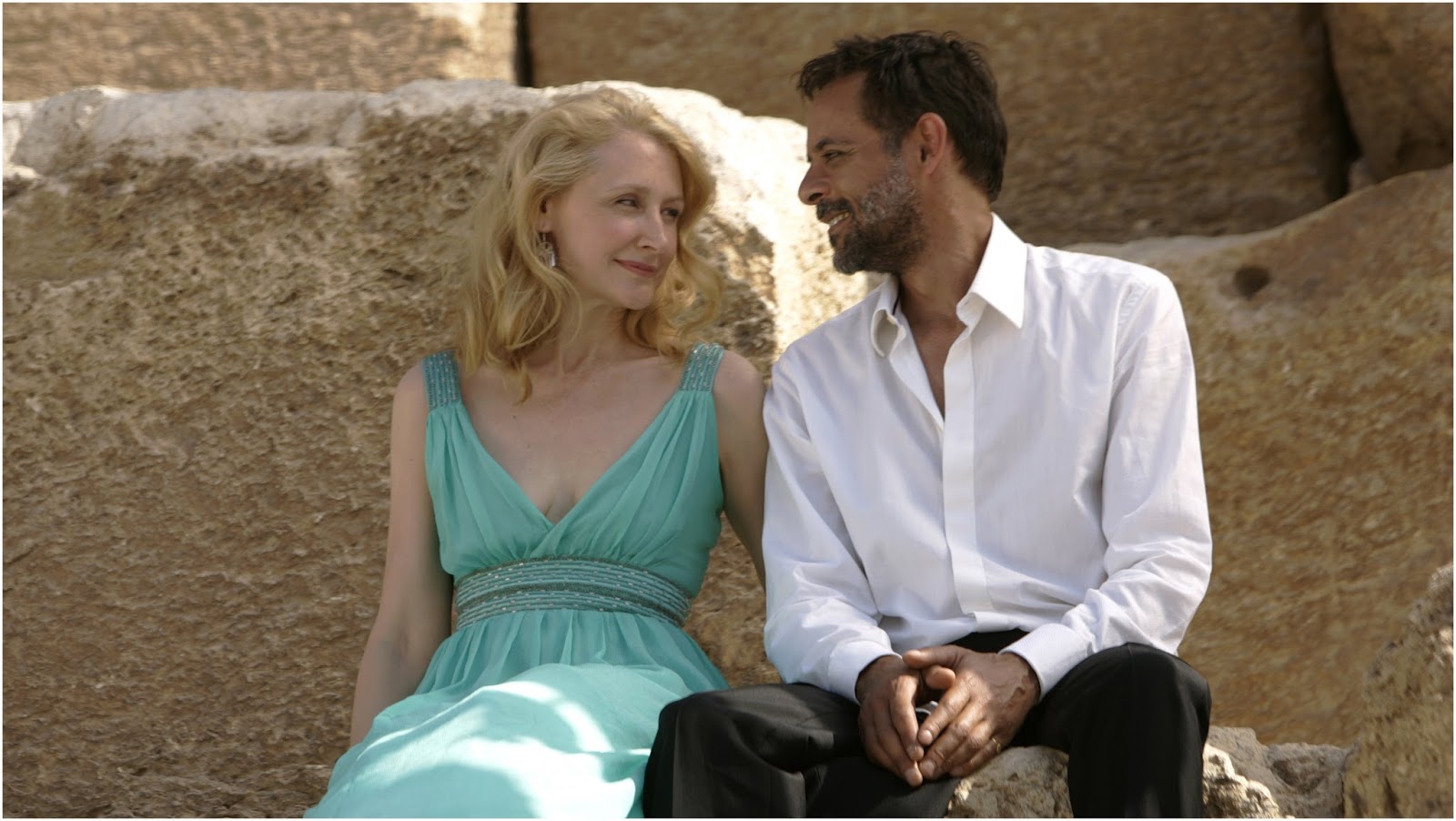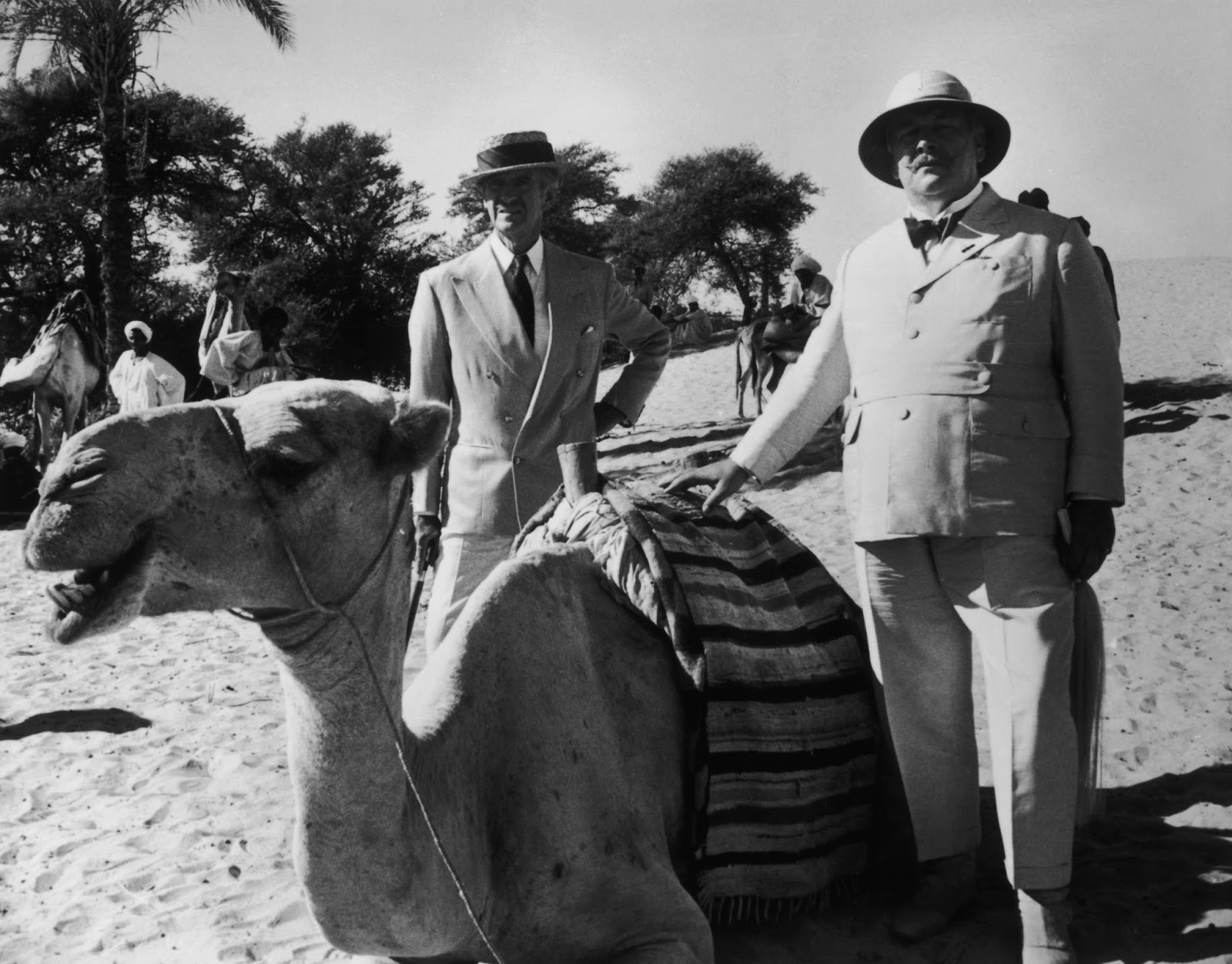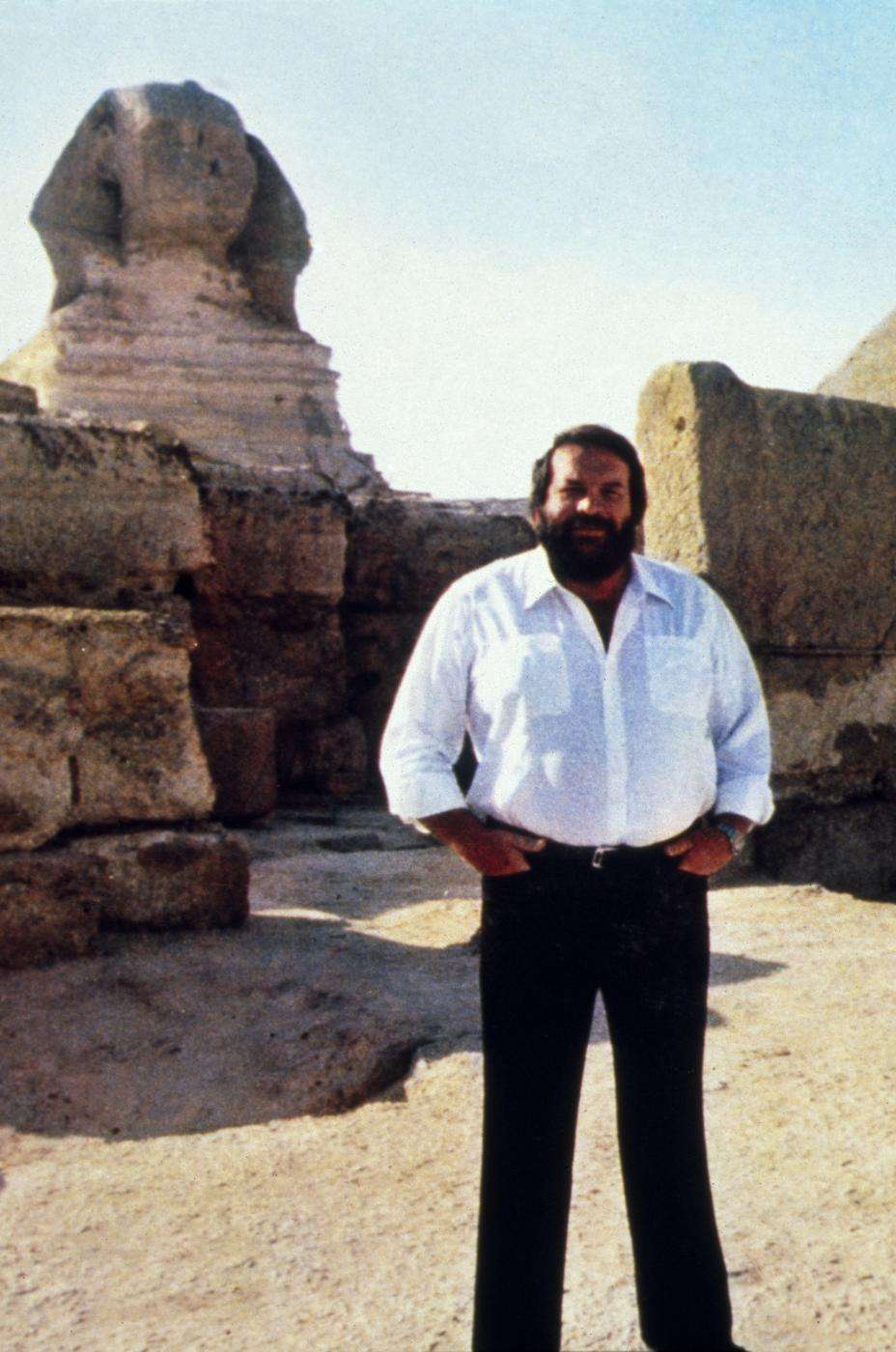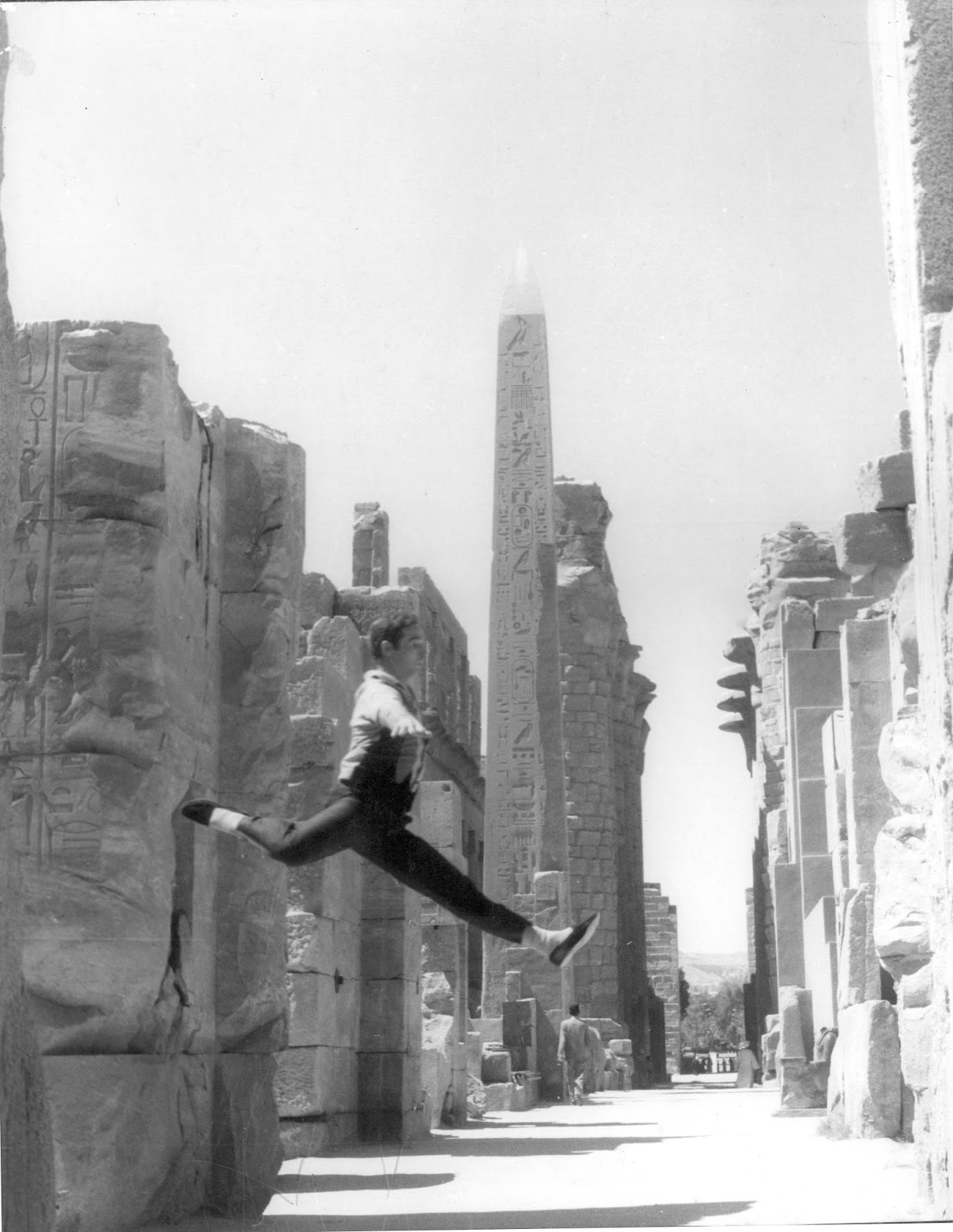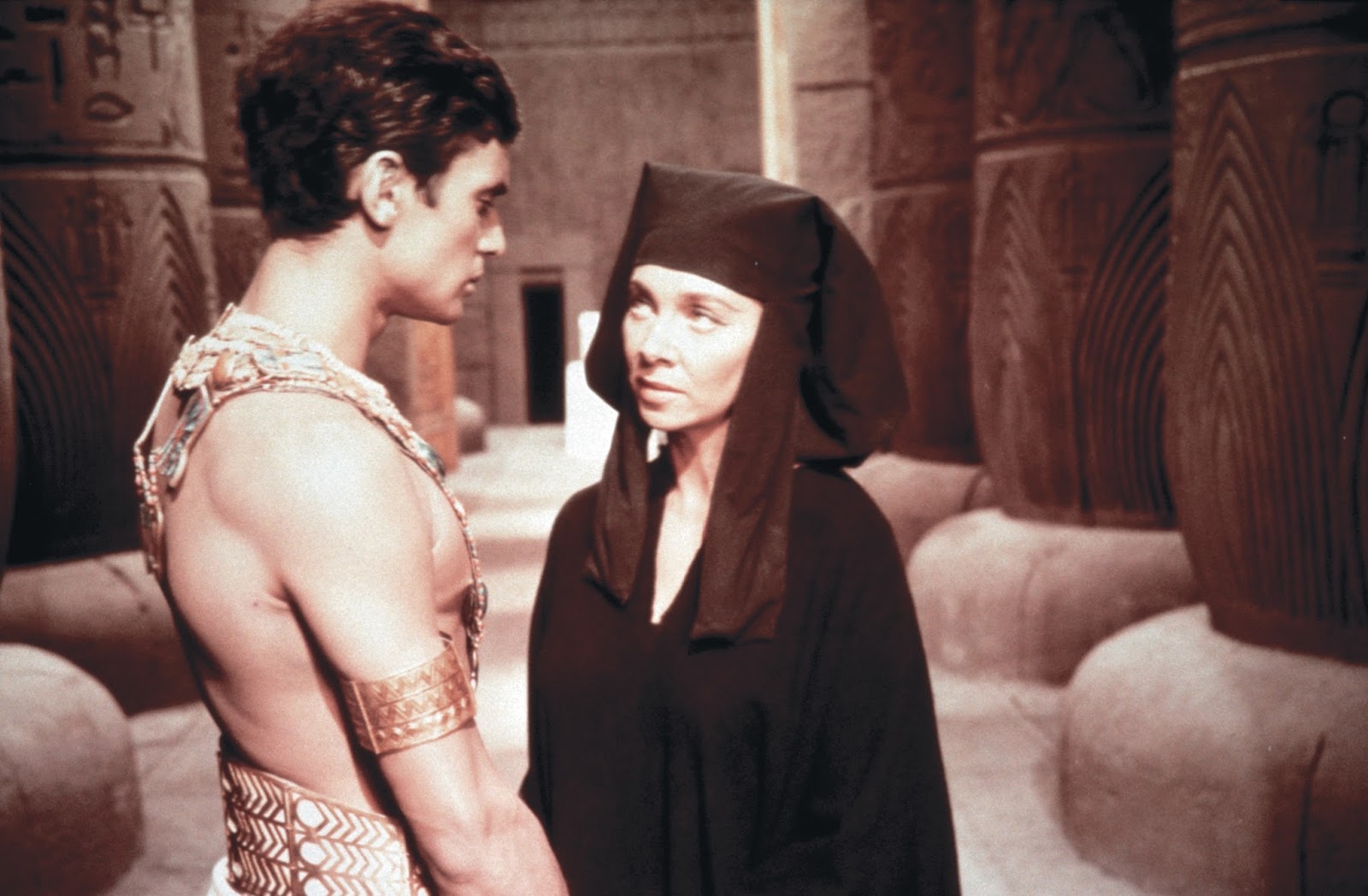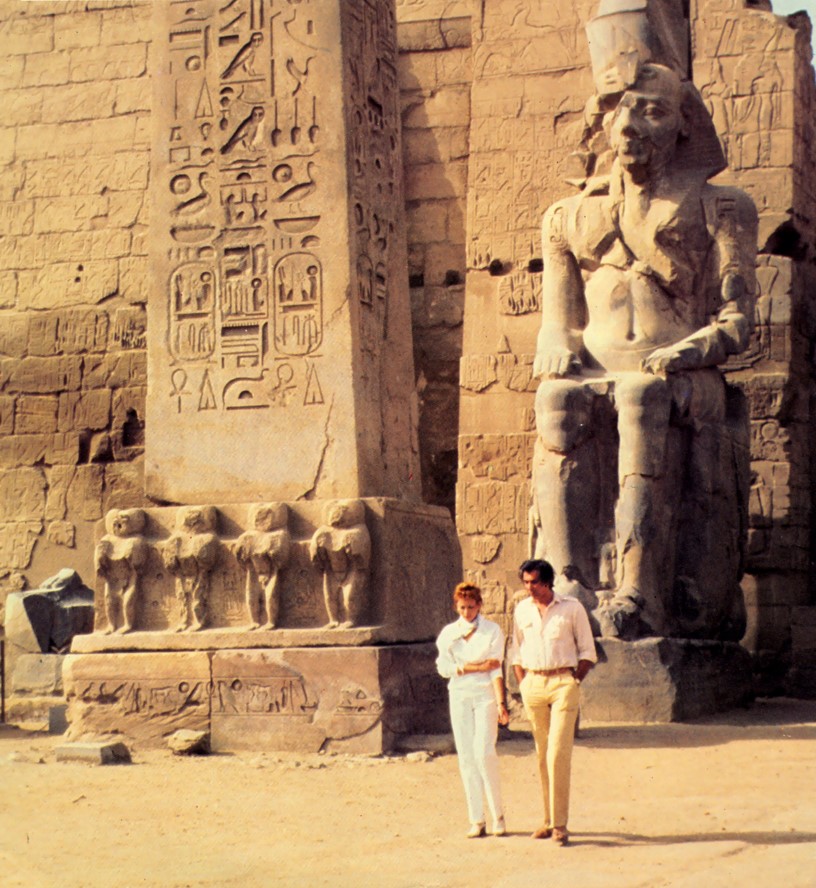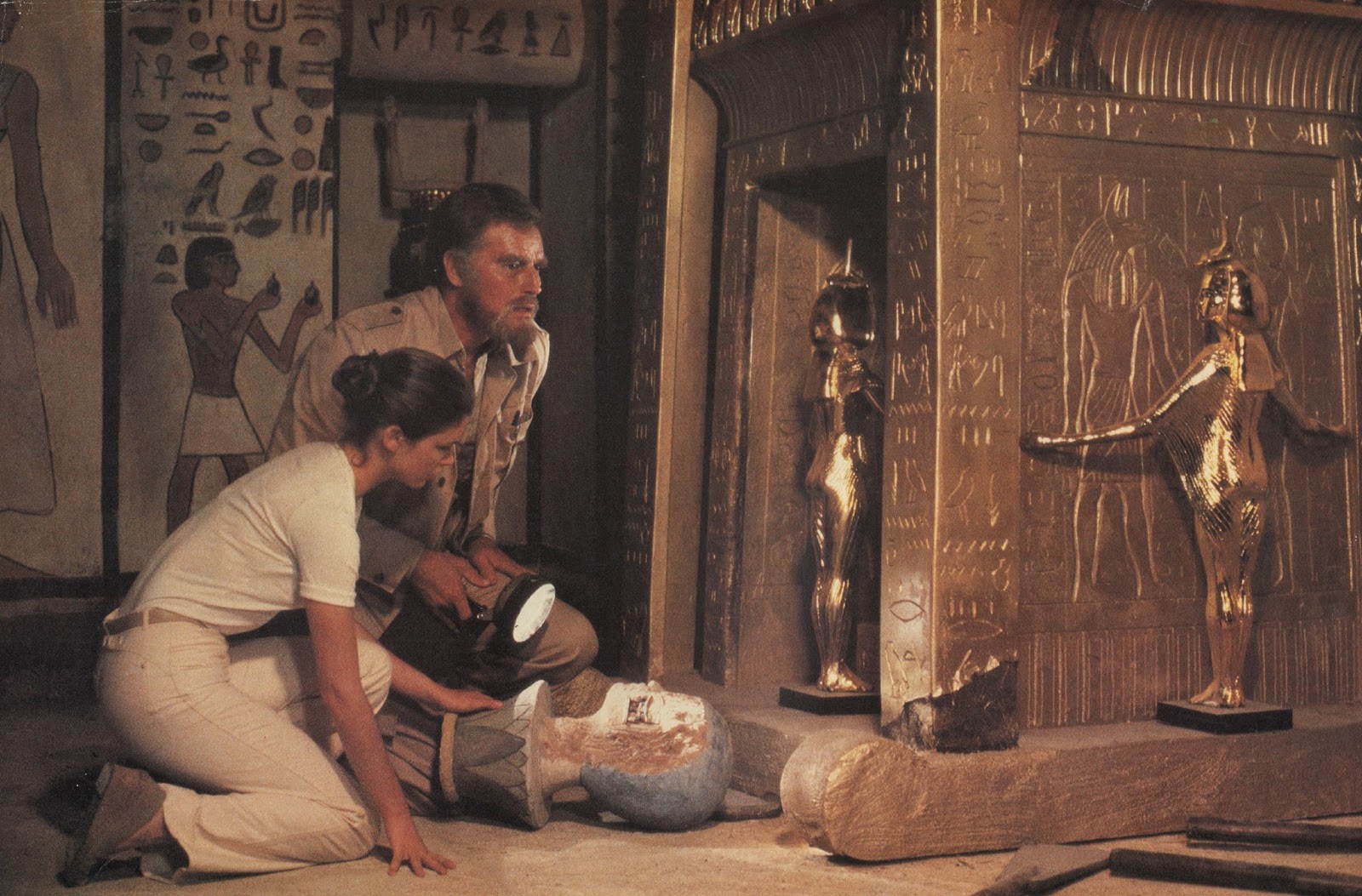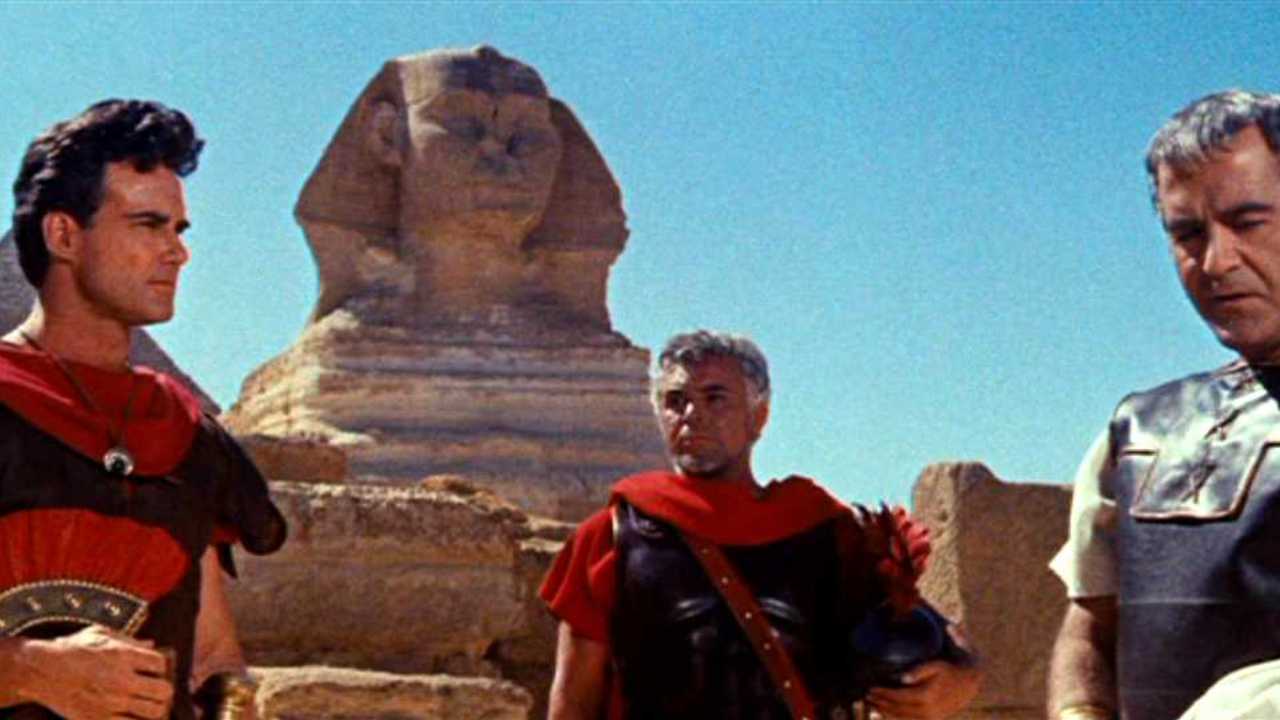by Sherif M. Awad
With the earliest film projections using a Lumière Brothers’ cinematograph at the Toussoun Exchange in Alexandria on the 15th of November then in Cairo on the 28th of November 1896, the birth of filmmaking and film screenings started in Egypt where a great film industry saw growth because of the country’s great locations and heritage. Egyptian films and foreign films that came to shoot in Egypt became a living memory of more than 100 years of cinema and still counting. Landmark places and destinations inspired many to come and visit Egypt to witness under sunlight what was experienced on the silver screen. Here comes a roundup of some of the most remembered places across Egypt seen in the eyes and lenses of local and international filmmakers.
The Pyramids (1897)
Right after the first film projections in Alexandria and Egypt, the Lumière Brothers produced an early documentary filmed by Alexandre Promio where the Egyptian Sphinx with passing men on camels were depicted.
Jungle Girl and the Slaver (1957)
This sequel to Liane, Jungle Goddess (1956) featured for the second-time model and singer of the era Marion Michael as Liane, a Tarzan-like German girl who was born and raised with African tribes. The film takes place mostly in Egypt where Liane is taken by Arab slave traders while her friend is trying to look for her. A scene near the end of the film with Liane taking a bus in Cairo streets features young pedestrians looking and laughing at the camera and feeling happy besides this beautiful blond. Egyptians are still longing to do the same once they spot a TV or film camera.
Wa Islamah (1961)
Directed by Enrico Bomba and Andrew Marton, Oh Islam aka Love and Faith was selected as the Egyptian entry for the Best Foreign Language Film at the 34th Academy Awards (Oscars), but did not make it as a nominee. It was the first Egyptian film to be screened at the San Francisco International Film Festival. Through the story of Jihad (Lobna Abd Al-Aziz) who was separated during her childhood from her brother Mahmoud (Ahmed Mazhar), the film depicts the defense of Egypt against the Tatar invasion. Andrew Marton, who has among his credits as second-unit director the famous chariot race sequence in Ben-Hur (1959), directed the Arabic version we see with Egyptian actors. Enrico Bomba directed an Italian version with some alternative actors including Silvana Pampanini as Queen Shagaret El Dor, a role played by Taheya Cariocca in our more familiar version.
The climax scene in the photo featured the reunion of Jihad and Mahmoud after the defeat of Tatar was shot near The Saladin Citadel on Mokattam hill.
El Naser Salah el Dine (1963)
The Crusades as told by great Egyptian director Youssef Chahine and great Egyptian writers Youssef Al-Sebai and Abd Al-Rahman Al-Sharkawy, Saladin the Victorious was also ranked among the top 100 films in the history of Egyptian cinema. When Muslim pilgrims are slaughtered by Christians in the holy lands, Saladin (Ahmed Mazhar) succeeds in taking back Jerusalem under the leadership of Richard the Lionheart of England. The film was shown at Moscow International Film Festival 1963.
Among the various battle scenes, the attack of Richard’s fleet and the Siege of Acre that was one of the first confrontations of the Third Crusade. Although Chahine shot the sequences near the Citadel of Qaitbay, history tells us that the Siege of Acre took place between 1189 and 1191 while Citadel of Qaitbay was constructed in 1477!
Operation Exterminate (1965)
Many Italian films came to shoot in Egypt during the 1950s and 1960s. Some belonged to the “Sword and Sandals” genre like The Slave aka The Son of Spartacus (1962) starring muscleman of the era Steve Reeves and our very Ahmed Ramzy in a supporting bit role. Others belonged to the spy genre like 008: Operation Exterminate where Ingrid Schoeller played the title character A008, a female-like James Bond who is searching for a stolen anti-radar device across Egypt. The writer-director Umberto Lenzi created many action sequences at the Pyramids, Cairo streets and the Mosque of Muhammad Ali. The film featured cameo appearances by many Egyptian actors like Ahmed Luxor and Omar Al-Hariry who were playing their usual roles in Egyptian cinema, an outlaw and a policeman.
Pharaoh (1966) / al-Mummia (1969)
A great 3- hour Polish film by director Jerzy Kawalerowicz who adapted the fiction novel of the same name by Boleslaw Prus. The Pharaoh of the title is Ramses XIII, played by Jerzy Zelnik, who must overcome the loss of his father and the political intrigues to keep Egypt safe. Some scenes were filmed at authentic Egyptian location like the pyramids of Giza. One of the many consultants on the film was Shadi Abd el-Salam, the Egyptian film director and art director, who had consulted on the 1963 Cleopatra. Abdel Salam, who was the costume designer for Pharaoh, directed, three years later, his renowned film The Night of Counting the Years aka al-Mummia in Arabic. Through Martin Scorsese’s World Cinema Foundation, the film was restored and presented again in Cannes Film Festival 2009. Shadi Abd el-Salam passed away in 1986 before realizing his ambitious project on Akhenaton aka The Tragedy of the Great House.
Gharam fi al-Karnak (1967)
Following the success Agazet nos el Sana (Mid-year Holiday, 1963) which was one of the most successful and popular musicals produced in Egypt, Reda Troupe reunited for another romantic comedy starring its dancing members. The story revolved on the talented Amina (Farida Fahmy) who joins a dancing troupe that is preparing a big spectacle at Karnak Temple in Luxor. While everybody rehearses for the grand opening, Amina eventually falls in love with the troupe director and main dancer Salah played by Mahmoud Reda.
The film is highlighted by beautiful songs and greats performances across Luxor monuments courtesy of the famous Reda Troupe with Mahmoud Reda as co-star and choreographer and his brother Aly Reda as the film director.
Emanuelle in Egypt (1976)
Part of the Emmanuelle series that featured many starlets of the era and many worldwide locations, this film was shot Egypt near the Pyramids and across the desert and the Nile River. The plot follows fashion model Laura and her photographer husband Carlo, both played by real life couple Laura Gemser and Gabriele Tinti, are invited to the palace of their rich friend Crystal in Egypt. Unbeknownst to many, this avant-garde film features an early and nearly silent role by actor and director Tarek al-Nahry (appearing in green jellabiya in the background) who is credited as Tarik Ali in the film’s titles.
The Spy Who Loved Me (1977)
A wonderful title track Nobody Does It Better by Carly Simon and a beautiful costar Barbara Bach mark this James Bond’s adventure that brought the British agent to Luxor Temple among many worldwide locations to investigate stolen nuclear warheads. Roger Moore came back 22 years later in Egypt as a goodwill ambassador for the UN in 1999 and posed in front of Cheops to promote the country’s tourist attractions.
Al-saqqa mat (1977)
Featured among the best 100 films in the Egyptian cinema history and considered as one of the best Egyptian films shot in the 1970s, Al-saqqa mat which translates as The Watercarrier Is Dead was directed by the legendary Egyptian filmmaker Salah Abou-Seif, nicknamed the leader of film realism in Egypt. The screenplay was an adaptation of a novel of the same name by great Egyptian novelist Youssef Al-Sebai who analyzed the effect of death on the living. Watercarrier Shousha (Ezzat Al-Alayly) cannot overcome the loss of his wife and so he befriends the local undertaker (Shahata) who has another take on life: to seek pleasure because death is inevitably coming.
The film was shot in Old Cairo to reflect the scent of the 1920s and the old neighborhoods like Bab al-Futuh, Al-Hosayniah and Al-Sayed Aisha. The photo features Shousha in a memorable scene walking across deserted buildings where is questioning the meaning of life and death.
Death on the Nile (1978)
Like all Agatha Christie’s writings, the plot revolves around a murder in a certain location where everybody is a suspect. Starring the great Peter Ustinov for the first of his six appearances as the Belgian detective and mystery solver Hercule Poirot, this British film shot for seven weeks on location in Egypt, including four on the steamer Karnak and the rest at places such as Aswan, Abu Simbel, Luxor, and Cairo. Re-adapted again for television as part of the series Agatha Christie’s Poirot, again the episode was shot across Egypt in 2004 with another great performer, David Suchet. The photo shows Ustinov and David Niven between takes.
Flatfoot in Egypt (1980)
Before he came to shoot the Italian production Flatfoot in Egypt, a young Bud Spencer (reel name: Carlo Pedersoli) was among the participants of 1951 Mediterranean Games in Alexandria, being a professional swimmer. The action-comedy was among his solo films without his usual screen buddy Terence Hill and the fourth and last of the Flatfoot series where he played a cop from Napoli who deals with international criminals only with his strong fist. Adel Adham and Mahmoud Kabil were among the Egyptian stars appearing in this film. An old man, Bud Spencer returned in Cairo Festival 2004 where he was given a tribute.
The Awakening (1980)/ Sphinx (1981)
The ancient Egyptian civilization mystified writers and filmmakers yet each had a different take when creating fictional stories related to such settings. The Awakening (1980) was the biggest budget adaptation of Bram Stoker’s 1903 novel The Jewel of Seven Stars. With renowned cast such as Charlton Heston, Susannah York and Stephanie Zimbalist, the film was shot across Egyptian exteriors and interiors including the Museum of Egyptian Antiquities in Tahrir. Heston played a British archeologist who discovers the tomb of an ancient Egyptian queen whose soul is reincarnated in his daughter (Zimbalist) on her 18th birthday. Sphinx (1981) was more of an action adventure starring a beautiful archeologist (Lesley-Anne Down) who is searching ancient treasures at the Valley of the Kings. Two great actors played Egyptian characters: Frank Langella as an Egyptian antiquity officer and John Gielgud as an old local. Big production films about “Egyptian mummies” never came back to shoot in Egypt. The Mummy (1999) was shot in Morocco and banned in Egypt although its 2001 sequel, also shot in Morocco and Jordan) was released in Egyptian cinemas. Apparently, the new upcoming Tom Cruise’s starrer The Mummy features a non-Egyptian mummy: it a shot in the Namibian desert with Algerian actress Sofia Boutella playing the villainous mummified queen.
Al hob fawk habadet al haram (1986)
Love on the Pyramids Plateau can be viewed online via the streaming service Mubi. It is one of the contemporary films that was immediate to reflect the problem of Egyptian newlyweds who cannot allocate an apartment to house their matrimony. A great screenplay by Mostafa Moharam was based on a timeless story by Nobel Prize Winner, the Egyptian great novelist Naguib Mahfouz where Aly (Ahmed Zaki) and his work colleague Ragaa (Athar Al-Hakim) decide to secretly get married because they cannot afford a wedding and an apartment. Unable to find place for their first night together, the couple decide to go near the Pyramids but of course they got arrested by the vice police. As frequent collaborators, director Atef Al-Tayeb and his director of photography Saiid Al-Simi succeeded in creating from the Pyramids as breathing characters witnessing to the suffering of the 1980s generation.
The scene features Ragaa and Aly climbing the old pathway to the Grand Pyramids. Yet it is recommended that the visitors imitate these two lovebirds.
Cairo Time (2009)
Shooting international films in Egypt became more problematic in the 1990s and the new century with some films coming to shoot then ultimately being banned from screened in Egyptian theaters. One of those films was Ruby Cairo (1992) starring Liam Neeson, Andie MacDowell and Viggo Mortensen where a wife tracks down the secrets of her deceased husband to Egypt. The same fate was faced by Exodus: Gods and Kings (2014) whose director Ridley Scott arrived for few days to shoot some scenes although the film retells the story of Moses. The film that escaped these problems was Cairo Time (2009) an exotic, romantic drama by Canadian-born writer-director Ruba Nadda. English-Sudanese actor Alexander Siddig played an Egyptian named Tareq who is asked to watch over Juliette (Patricia Clarkson) during her Egyptian visit. Nadda, who has a Syrian father and a Palestinian mother gave tribute the Arab world and the romanticism of classic Egyptian cinema through the love story that generates between Tareq and Juliette with the backdrops of the Nile and the Pyramids.
